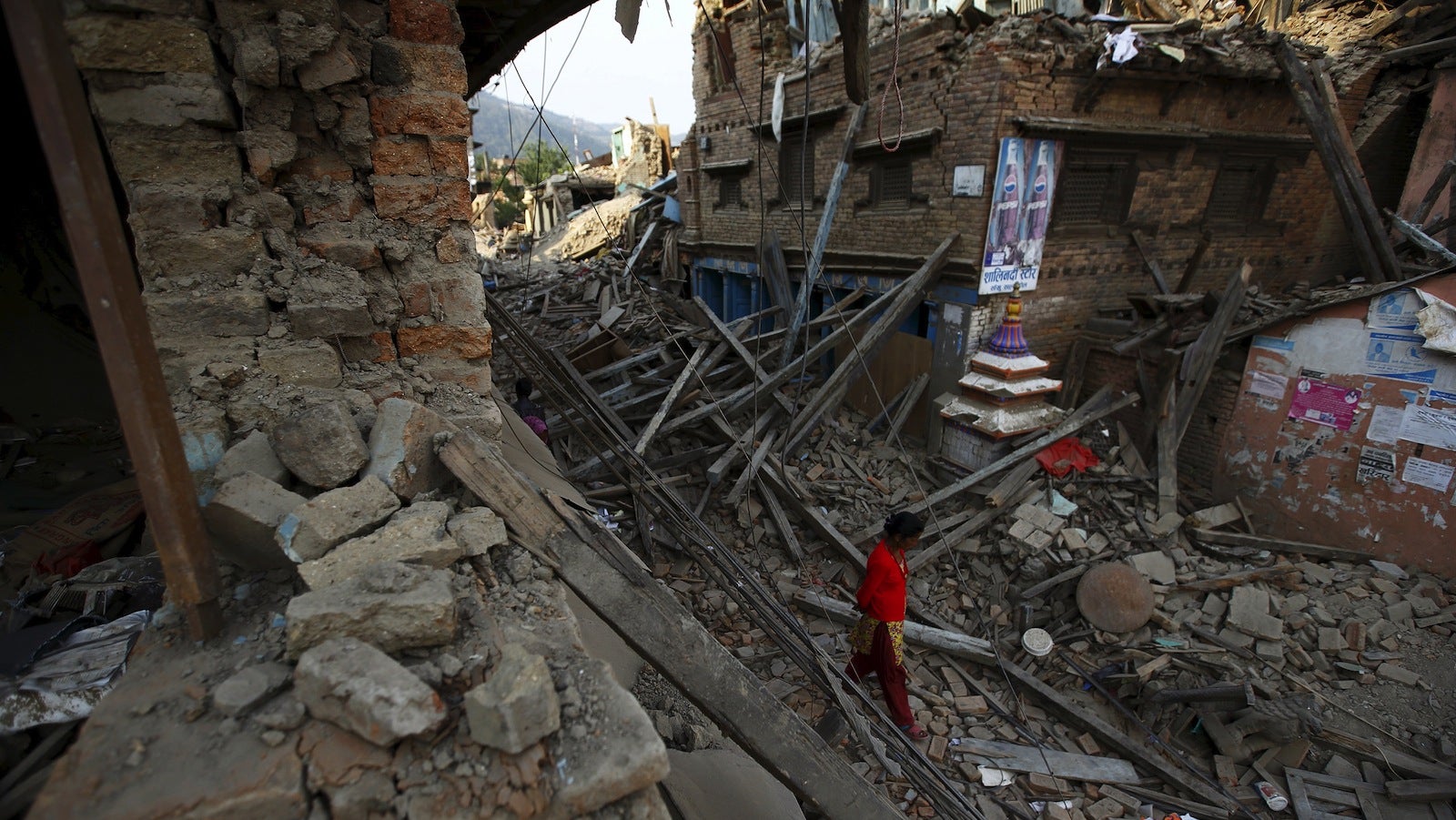What India can learn from Nepal
With large parts of a small country flattened by an earthquake, Nepal once again comes across in Indian eyes as a small country that can get by only with a little help from friends.


With large parts of a small country flattened by an earthquake, Nepal once again comes across in Indian eyes as a small country that can get by only with a little help from friends.
Nepal is this conflict-ridden poor country that hasn’t been able to frame a new Constitution for eight years now, has ego issues with India, plays the China card before New Delhi, and so on. Nepal’s image as a country that can’t manage itself is reinforced by the constant political instability in Kathmandu, because the politics is too bitter.
Such an image of Nepal is reinforced by how Kathmandu has been found wanting in its response to the earthquake. Yet, our big brother arrogance does not let Indians see Nepal beyond this image. If we could, we’d be surprised that there are ways in which Nepal’s polity is more progressive than India’s. We could learn a thing or two from them.
In his book Battles of the New Republic: A Contemporary History of Nepal, published last year, Prashant Jha argues that Nepal has gone from war to peace, monarchy to republic, theocratic to secular state, a monolithic hill-centric nationalism to inclusive citizenship, and is slowly moving from unitary to federal state. These are processes, Jha argues, that countries and societies have taken decades to achieve. Nepal is leap-frogging in no time—and when you see it this way, you’d be slightly less contemptuous of Kathmandu’s acrimonious polity. These processes began after the royal massacre of 2001—14 years ago.
Points of conflict
Consider, in contrast, how India’s various conflicts, in Kashmir, the North East and the tribal belt, have been dragging on for decades, with New Delhi “managing” rather than seeking to resolve them.
The Nepali war years from 1996 to 2006 left 16,000 dead, 1,300 disappeared and thousands displaced. In a world full of conflict, these numbers appear small. Yet, a world full of conflict also needs to learn from the Nepali example of sorting out the changing nature of its society and politics through constitution-making, slowly but steadily. Bringing the Maoists to the table was no mean achievement, one that India came around to supporting.
As Nepal debates what kind of a society and country it wants to be, the churning has been throwing up some progressive trends. It is curious, for instance, why Nepal has almost no internet censorship, a claim no other South Asian country can make. Internet censorship, more than even press censorship, is a sign of how free a society is. It is curious why Nepal’s politicians don’t seek to muzzle online voices even though their politics is bitter to the point of being internecine. Blood is shed before every election.
This is not an isolated case of being comfortable with free speech and dissent. Nepal is also the only country in South Asia with no restrictions on community radio. Anybody can set up a local community radio station. News and politics are allowed. There were 263 operational community radio stations when the earthquake struck; 20 of them have been destroyed. Community radio is a powerful tool for bridging the information divide in poor societies like ours. Unfortunately, India is too afraid of radio, and does not give community radio licenses to anyone other than small NGOs and universities. India doesn’t even allow news on FM radio.
Minority freedoms
Nepal is the only country in South Asia where homosexuality is not criminalised. The Nepali Supreme Court did decriminalise it in 2008 and even asked the government to legislate in favour of equal rights to sexual minorities, which the constituent assembly is deliberating upon. When Nepal gets a new constitution, it may even legalise gay marriage. In 2008, Sunil Babu Pant became a member of the first constituent assembly (2008-2012), thus becoming the only openly gay politician in South Asia.
The first constituent assembly was described by the United Nations as having set a “gold standard on inclusion of minorities.” A third of its 601 members were women, Dalit representation was up from 0 to 49 in just a decade. The second constituent assembly, too, has such diversity that it has thirty political parties and two independents. The earthquake will perhaps bring some urgency to the constituent assembly, making its members find a middle ground between their differences.
The Indian Constitution and the formative years of the Indian state were helped by Nehru, who had few political challengers. In Nepal’s case, the polity is bitterly fractured between a declining feudal order and an assertive subaltern politics. To this churning, the earthquake has come as a major setback. India and the world can only help Nepal. It is ultimately Nepal that will have to rebuild itself. While it does so, India would do well to learn a few lessons from Nepal. The most important of those, of course, is how to prepare for an earthquake.
This post first appeared on Scroll.in. We welcome your comments at ideas.india@qz.com.